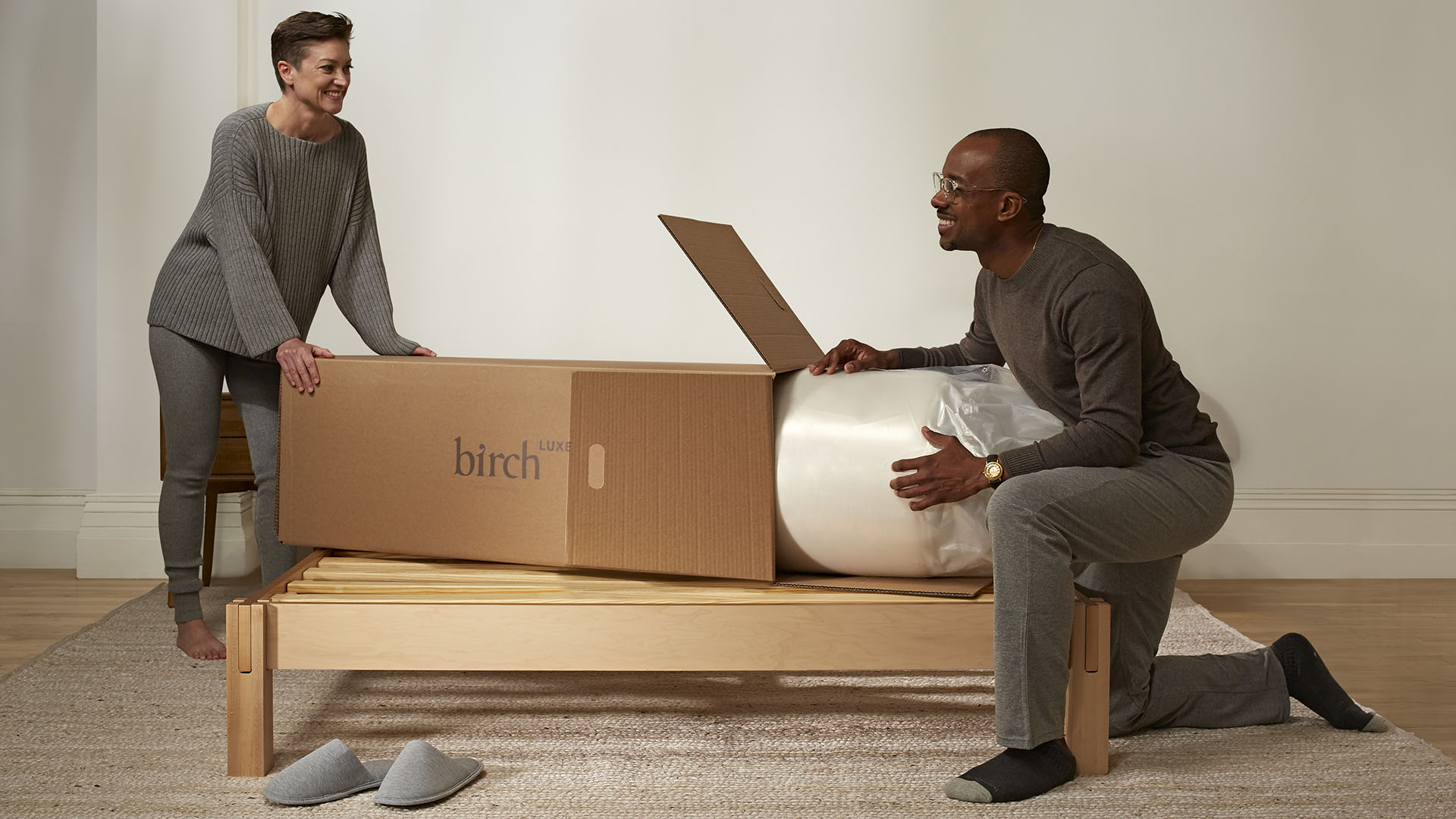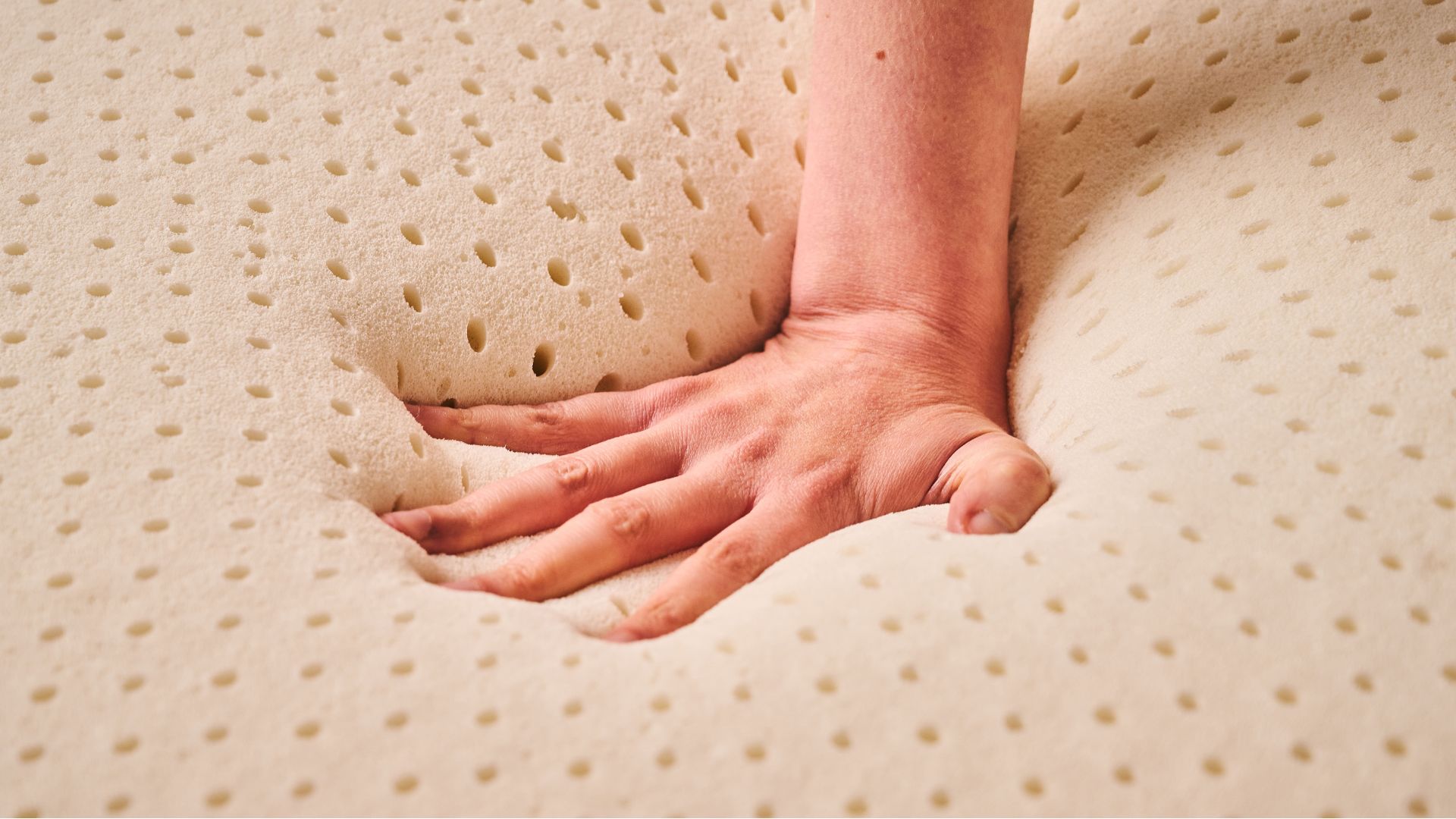
If you’ve just invested in a latex mattress, you might be wondering what to expect once it arrives at your door. Latex mattresses provide a very specific ‘feel’ for sleepers, so it’s worth knowing more about what goes on under the packaging and what to expect when you sleep on one.
Like many of our picks in this year’s best mattress guide for all sleepers, latex mattresses are available in both all-foam and hybrid versions, with the material providing plenty of bounce and support for a variety of sleeping positions. However, if you’ve come from sleeping on a more traditional innerspring mattress, or all-enveloping memory foam, you’re going to notice some differences with a latex mattress.
In this guide we’ll look at what to expect, covering aspects such as unboxing, expansion time, comfort and care tips. Let’s start unpacking…
What is a latex mattress?
A latex mattress is one that contains natural latex as a core material. Synthetic latex is also available, but in this guide we’re sticking to natural latex. Latex mattresses are made with either Dunlop or Talalay latex (more on that in a moment). You’ll find mattresses that contain only latex foam, as well as latex hybrids that contain coils for extra support.
Latex foam is usually accompanied by other breathable and organic materials, such as organic cotton covers and wool layers, with mattresses being fiberglass-free. Many of the best organic mattresses are made with latex – look for those with certifications such as GOLS (Global Organic Latex Standard) to ensure your mattress actually uses natural latex.

6 thing to expect after buying a latex mattress
1. Latex mattresses are heavy
Latex mattresses sometimes come flat and are delivered straight to your bedroom. However, many latex mattresses are delivered vacuum packed in a box, allowing manufacturers to save on space and outlay, with savings passed on to the customer. But while the best mattresses in a box may be cheaper, if they contain latex they can be hard to move about.
There’s no getting away from the fact that latex mattresses are heavy. So, if your mattress brand offers delivery to your bedroom, we’d recommend jumping on that. If it’s just delivered to your door, you are going to need two people to get the mattress to your bedroom. Don’t try and move it on your own unless you’re looking for a new back injury.
Once upstairs, make sure to position the mattress on your bed frame before cutting open the plastic wrappings. There are usually several layers, with some brands providing a cutter although scissors will work just as well. Be warned, once you release the mattress from its vacuum packing, it will start to expand quickly.
2. You’ll need to let the mattress expand
If your latex mattress arrives in a box, it will have been compressed with specialist machinery before being wrapped in heavy duty plastic. What this means is that when you first release the mattress from its plastic, it’s likely to start expanding fairly quickly.
But this doesn’t mean you can sleep on the mattress straight away. Latex mattresses in a box need time to fully expand and sleeping on them before they’ve expanded could damage the structure.

However, latex mattresses will expand faster than many of the best memory foam mattresses. Latex is not as dense as memory foam, so air will flow back into the layers far faster.
Mattress expansion times for latex mattresses don’t tend to vary much, with brands recommending you wait one to two hours before sleeping on the bed. Even though you can sleep on a latex mattress after this point, you should expect to see further expansion over the next 24 hours.
3. You might notice a slight smell
Although latex isn’t as prone to off-gassing as memory foam, it’s still normal for there to be a slight smell when you first unbox your mattress. Off-gassing is the process in which volatile organic compounds (VOCs) are released from a product as it expands from compression. It isn’t inherently dangerous, but care should be taken if you have asthma or have very young children in the house.
You should expect most latex mattresses to lose the smell quickly within an hour or so of unboxing. To speed up the process, shut the bedroom door and open the windows.
4. Your body will need time to adjust

Whatever type of mattress you’ve been sleeping on previously, your body will need time to adjust to a new bed. Latex mattresses offer a bouncier feel than memory foam and if this is combined with coils, it can take a little time to adjust to.
This is why manufacturers provide sleep trials, giving sleepers time to try a mattress out. Most manufacturers ask you to try out the mattress for at least 30 nights before asking for a return, as this is the rough amount of time it can take for the body to adjust. You’ll find sleep trials ranging from 100 nights up to an entire year, giving plenty of time to see if a mattress is right for you.
5. You’ll need to take care of the mattress
Many mattresses now come with washable covers, but we’d still recommend investing in one of the best mattress protectors to protect the mattress from any spills and stains. A protector is also considerably easier to remove and wash on a regular basis.
You also need to make sure that you rotate your mattress according to your brand’s guidelines. These obviously vary from brand to brand, but we’d suggest rotating your mattress every three months. Finally, set up a regular cleaning schedule to ensure your mattress stays free of dust, dirt and mites. Latex is incredibly durable, with some beds lasting up to 20 years, but you still need to look after your mattress.

What’s the difference between Dunlop and Talalay latex?
Although both Dunlop and Talalay latex start life as sap in a rubber tree which is then whipped into a froth alongside other non-toxic materials, the manufacturing process and finished products are different. For Dunlop latex the froth is then poured into a mould all the way to the top, baked, removed from the mould, washed and then baked again.
With Talalay latex, froth is poured to partially fill a mould. This is then vacuum sealed to make the liquid expand to fill the mould. After this, the latex is frozen, baked, washed and dried.
Dunlop latex has a denser, firmer feel than Talalay, and is often used for support layers in both all-foam latex and hybrid mattresses. As it’s denser, it’s a little more durable and the simpler manufacturing process means it’s cheaper to produce and less expensive to buy. However, Dunlop latex can be uneven and heavier at the bottom.
Talalay latex is softer and spongier, with a bouncier and plusher feel that’s more cushioning. Because of this, it’s often used as a comfort layer in some of the best hybrid mattresses, along with pillows and latex mattress toppers. Whilst it’s generally more expensive, Talalay latex has a more consistent feel due to the latex expanding to fit the mould during manufacturing.
What are the benefits of a latex mattress?
Latex mattresses are often the ideal choice for those suffering with back or joint pain. Like all the best mattresses for back pain, latex mattresses promote neutral spinal alignment, which is crucial for avoiding pressure build up. The comforting and cushioning properties of latex make it a fantastic choice for those suffering with pain.
Natural latex is also environmentally responsible, which is why you’ll often find these beds paired with other organic materials. It’s also naturally hypoallergenic, as well as resistant to mould and dust mites. Latex also has an open-cell structure, which allows air to flow around the mattress. In addition, a series of pinholes are added during the processing of latex, meaning these mattresses are a fantastic choice if you sleep hot.
Lastly, latex is incredibly durable. A latex mattress could give you between 20 and 25 years of perfect sleep, depending on the brand and type of latex / other materials used.

What to do if you don’t like your new latex mattress
The bouncier feel of latex isn’t for everyone, so what happens if you don’t like your new memory foam mattress? Mattress in a box brands tend to offer a few options if you do decide that the mattress isn’t for you:
- Give the mattress a fair trial: Most brands won’t accept returns or exchanges until you’ve slept on a mattress for at least 30 days. And this is because it takes time to get used to a new mattress and to ‘break it in’. So, before you return your mattress, make sure you’ve given it a fair trial.
- Ask for a free comfort layer: Some brands will offer a free comfort layer if your mattress is too firm or too soft, helping to alter the feel of the mattress and giving you more time to break it in.
- Exchange the mattress: If the brand you’ve purchased from has other mattresses on offer, you could consider exchanging the mattress for another one that’s firmer or softer (according to your requirements). However, this could mean that you won’t be able to return the replacement at all, so do check the policies.
- Return the mattress: If your mattress is within its trial period, you will be able to return it for a full refund, providing it’s in good condition and not damaged.







